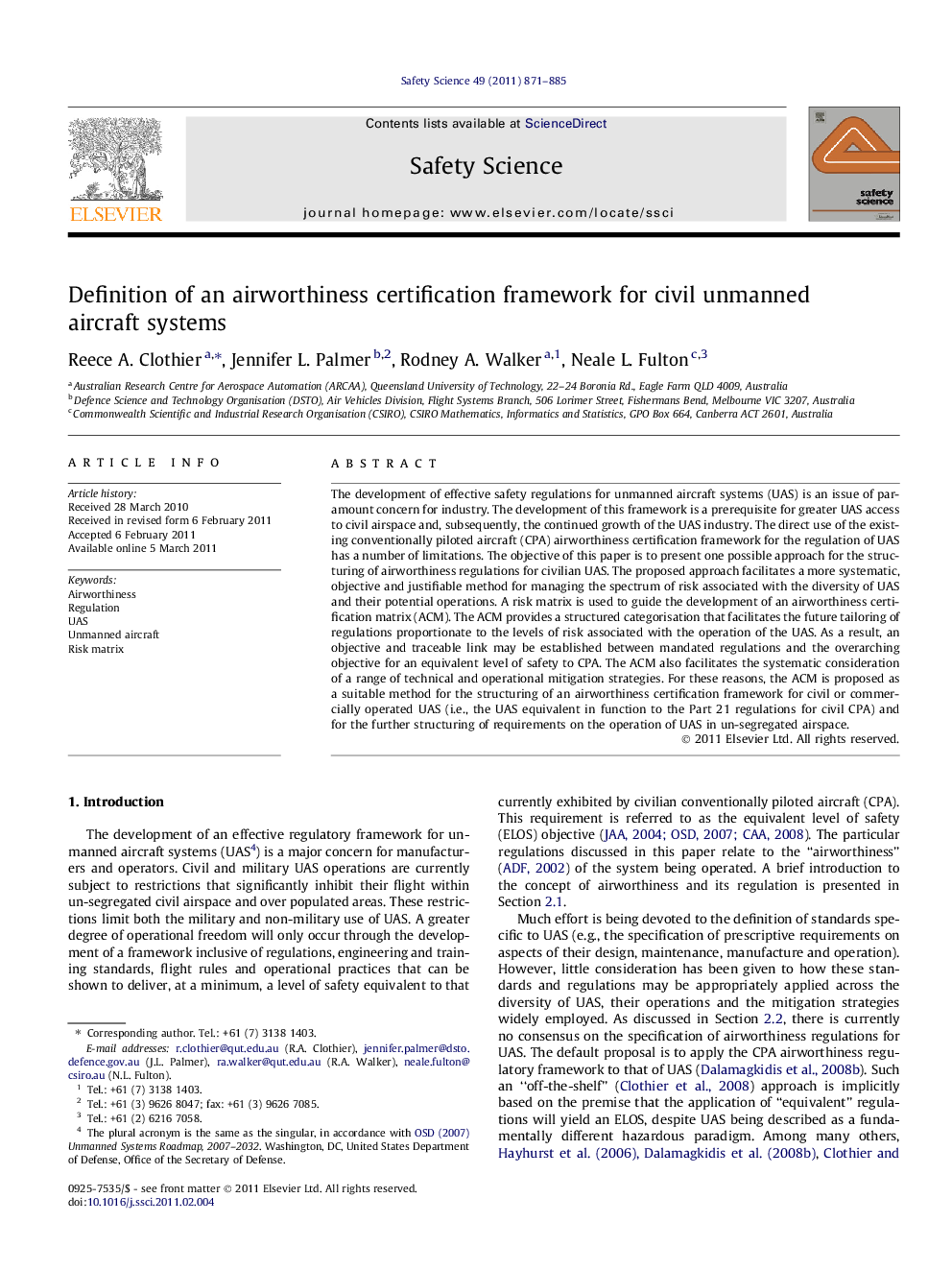| Article ID | Journal | Published Year | Pages | File Type |
|---|---|---|---|---|
| 589423 | Safety Science | 2011 | 15 Pages |
The development of effective safety regulations for unmanned aircraft systems (UAS) is an issue of paramount concern for industry. The development of this framework is a prerequisite for greater UAS access to civil airspace and, subsequently, the continued growth of the UAS industry. The direct use of the existing conventionally piloted aircraft (CPA) airworthiness certification framework for the regulation of UAS has a number of limitations. The objective of this paper is to present one possible approach for the structuring of airworthiness regulations for civilian UAS. The proposed approach facilitates a more systematic, objective and justifiable method for managing the spectrum of risk associated with the diversity of UAS and their potential operations. A risk matrix is used to guide the development of an airworthiness certification matrix (ACM). The ACM provides a structured categorisation that facilitates the future tailoring of regulations proportionate to the levels of risk associated with the operation of the UAS. As a result, an objective and traceable link may be established between mandated regulations and the overarching objective for an equivalent level of safety to CPA. The ACM also facilitates the systematic consideration of a range of technical and operational mitigation strategies. For these reasons, the ACM is proposed as a suitable method for the structuring of an airworthiness certification framework for civil or commercially operated UAS (i.e., the UAS equivalent in function to the Part 21 regulations for civil CPA) and for the further structuring of requirements on the operation of UAS in un-segregated airspace.
Research highlights► Unique aspects concerning the airworthiness of unmanned aircraft are described. ► A framework for the regulation of unmanned aircraft is proposed using a risk matrix. ► Approach is justifiable, systematic and comprehensive in managing the risk profile. ► Permits a flexible tailoring of regulations proportionate to the degree of risk. ► Can also be used to structure regulations relating to airspace integration.
